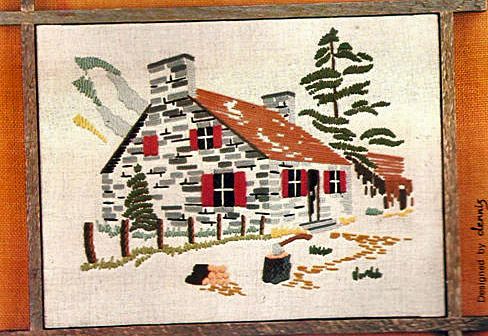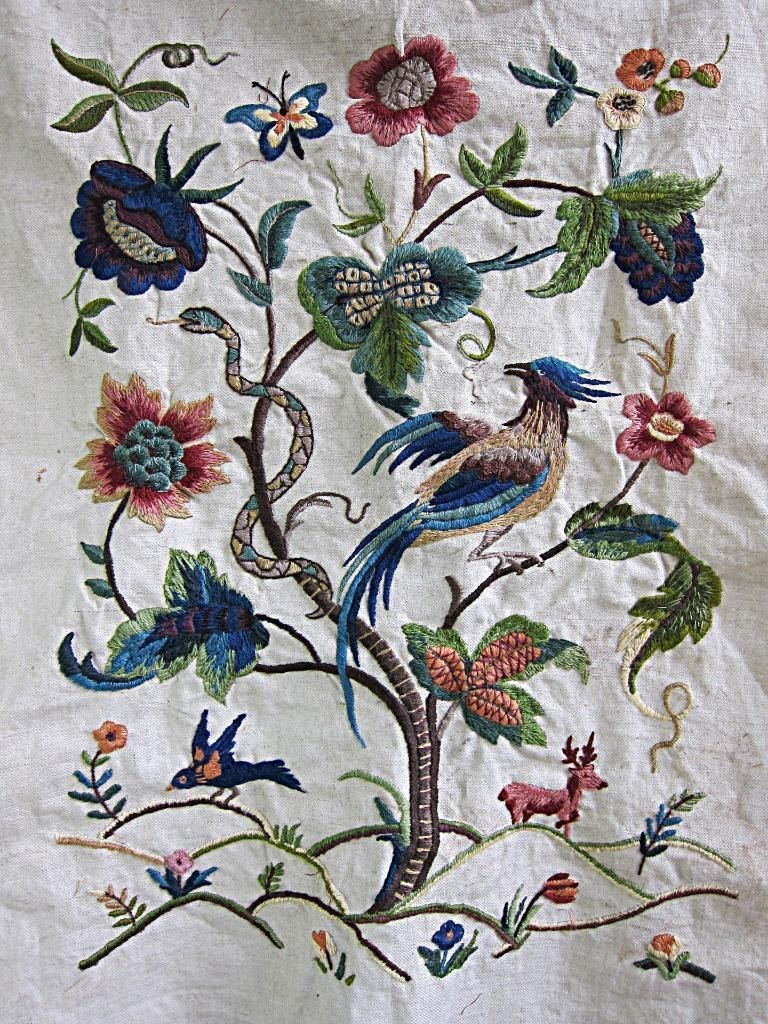Are you looking for Crewel Art? then to check out this post. India has inherited a great tradition of handicrafts which has made India famous for the excellence it has achieved in the rich variety of textiles. In nearly all parts of the country, we find communities of weavers and families doing fabric designing or embroidery living together.
One of the most elegant and beautiful art is of crewel embroidery. It’s a surface embroidery done with wool which gives it a distant look. It uses a very old technique, a few centuries or more, in which a wide variety of different embroidery stitches are used to follow a design outline applied to the fabric.
Crewel Art
Crewelwork has a rich history dating back to the early Medieval Period. Biblical references are made to curtains, altar cloths, and other hangings. Fragments have been found in North Mongolia showing the face of a nomad warrior, dating to about the 1st. Century BC. Crewelwork has been traded since at least the 14thC along the oldest trading routes from China through India, Persia, Turkey and into Europe. But it gained popularity in 16th C during the period of Queen Elizabeth and Jacobean with elaborate designs of stylized flowers, birds, and beasts being worked in wool on household goods and even clothing.
But it gained popularity in 16th C during the period of Queen Elizabeth and Jacobean with elaborate designs of stylized flowers, birds, and beasts being worked in wool on household goods and even clothing.
Then again in the early 18th-century crewel was replaced with many other forms of needlework. Then again in the decade of 1970, it became popular again with new innovation to designs, fabric and the thread used.
Threads:
- a) Persian Wool: Persian Wool is the most popular type of yarn. It consists of 3 plies of fine wool yarn loosely twisted together that can easily be separated or combined to reduce or increase the thickness of the thread as needed for working on different size needlepoint canvas. Each of these plies is made up of 2 threads loosely woven together to make the ply strong and long-lasting.
- b) Tapestry Wool: Tapestry Yarn is a soft tightly twisted 4-ply woolen thread that cannot be separated thus used as a single strand. It provides ultra-smooth finished stitching. It’s twist and thickness give it excellent canvas coverage and provides a smooth and even texture. Unlike Persian Yarn, Tapestry Wool has a matte finish instead of a soft sheen.
- c) Bella Lusso Wool: This is merino wool from Italy. This wool comes from merino sheep and is thought to be the softest wool of all. It is so smooth that it feels like working with cotton a broader or floche.
- d) Appleton Wool: Appleton Wools have been produced in England for 180 years. It comes in two different styles i.e. 2 ply crewel yarn and 4 ply tapestry yarn. It is durable, moth-proofed and hard-wearing.
(There are several other types of wools but these are considered best.)

Today, crewel work is going through another revival in popularity due to a number of new books devoted to crewelwork. It has long been popular in India where its many forms are sometimes identified as Kashmir Embroidery.
Today, the most beautiful crewel worked fabrics on the market are much simpler and predominantly made in Kashmir. Also nowadays by integrating other types of thread in traditionally used wool; a variation from traditional crewel can be seen.
Often today, crewelwork designers mix silk threads, cotton, and blends in their crewel designs. It leads to a basic question what would it be crewelwork without any wool there? Afraid, not.



